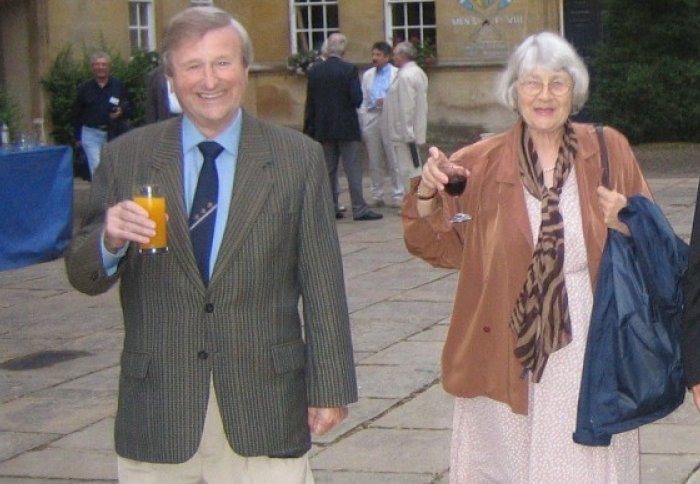

Tribute
It is with great sadness that we report the death of Malcolm Haines, a long standing member of the Plasma Physics Group at Imperial College.
Malcolm was born in Belfast and grew up in Wales. He first came to Imperial College in 1953 and was at Imperial all his life, gaining a BSc in 1957 and PhD in 1960. Immediately thereafter he was appointed a lecturer by Pat Blackett, the then Head of Department. Malcolm was made Professor in 1975 and Dean of the Royal College of Science in 1999. He retired in 2002, but remained deeply engaged with Imperial College and the Plasma Physics group as an Emeritus Professor and Senior Research Investigator.
Malcolm pursued a distinguished and world renowned career in plasma physics, making significant contributions to both magnetic and inertial fusion. His PhD work was on the theory of z-pinches, an interest that continued throughout his career. Out of this work came the Polytron, a plasma confinement device based on Hall acceleration in cusp magnetic fields, and later the Magpie experiment based at Imperial. This work is continuing in the Group to this day. Plasma rotation in magnetic fields was another topic that he worked on throughout his life, first on rotation in theta pinches and later in tokamaks. A new paper of his, on spontaneous toroidal rotation in tokamaks, is currently with referees. He published over 250 papers in all areas of plasma physics, including fundamentals such as kinetic theory, transport and stability. Malcolm is also a co-author on many experimental papers, which is a distinguishing mark of his broad and enduring contribution. The work on magnetic field generation in laser plasma interactions, absorption of intense lasers, electro-thermal instabilities are a few examples. Physics was an essential part of his life and sustained him during his long illness.
He was elected Fellow of the Institute of Physics and Fellow of the American Physical Society. His contribution to plasma physics was recognised by the award of the Alfvén Prize of the European Physical Society.
Under Malcolm's leadership the Plasma Physics Group pioneered the use of pulsed power devices in plasmas out of which emerged the large scale work at Sandia Laboratory in the US. Malcolm was closely involved in making the case for the establishment of the Laser Division at the Rutherford Appleton Laboratory, now one of the world’s premier laser facilities. He was a consultant to the Culham Laboratory since the early sixties. For the last twenty years he was a consultant to Livermore National Laboratories, Sandia National Laboratory and the Laboratory of Laser Energetics at the University of Rochester.
Malcolm became the head of the Plasma Physics Group in 1975. The Group had been established just before Malcolm's arrival at Imperial. It has produced over 300 PhDs, a number of whom are leading plasma physicists throughout the world.
Malcolm was an accomplished organist and pianist and enjoyed playing the harpsichord. He was a Fellow of the Royal College of Organists and was famous for organ recitals at plasma conferences he attended and he played a significant part in the musical life at Imperial.
The view that Malcolm Haines, over 50 years, made a greater contribution to Plasma Physics than anyone else in the U.K. would be heartily endorsed in the United States. His good humour, charm, insight and enthusiasm will be deeply missed.
Article text (excluding photos or graphics) available under an Attribution-NonCommercial-ShareAlike Creative Commons license.
Photos and graphics subject to third party copyright used with permission or © Imperial College London.
Reporter
Caroline Jackson
Department of Physics

Contact details
Email: press.office@imperial.ac.uk
Show all stories by this author



